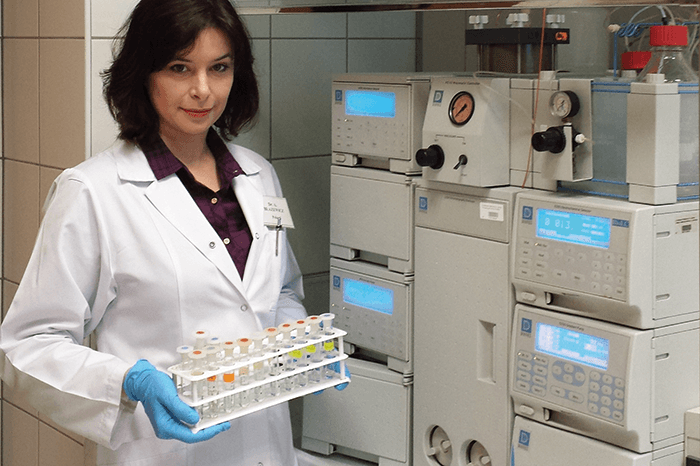
Anna Blazewicz’ interest in the determination of elements in body fluids and tissues began several years ago, whilst a chemist working in collaboration with medical clinics. Her research into autism began more recently, when in 2013 Blazewicz (pictured) initiated a project to determine various elements, including iodine, in autistic and healthy children – a project done in collaboration with the Department of Psychiatry at the Medical University of Lublin in Poland. Beyond the analytical scope of the project, Blazewicz had another strong reason: “I became interested in this very complex disorder more than 15 years ago, when my child was diagnosed with Asperger’s syndrome. Essentially, I deal with autism spectrum disorders (ASD) 24 hours a day, seven days a week,” she says. “In my experience, the parents of children with this disorder do not need encouragement to seek answers to the questions of what causes ASD and how it can be treated – and that means I have extra motivation, driven by the knowledge of psychiatrists, psychologists and my own experience, but also the experience of other parents with children with autism.”
The team used ion chromatography (IC) to study iodine in the urine of children with severe autism (1). For the determination of iodide ions, the team applied pulsed amperometric detection (PAD), which allowed for detection in the low ppb-range, demonstrating high specificity for iodide ions. According to the research paper in the Journal of Trace Elements in Medicine and Biology: "19 out of 40 children with ASD had mild to moderate iodine deficiency. Statistically significant lower levels of UI, fT3 and fT4 and higher levels of TSH were found in the autistic group when compared with the control group." Blazewicz admits that IC “isn’t very popular” in the field of medical analysis, despite several benefits. “One of the advantages of IC, when it comes to practical application, is the simplicity of sample preparation (although quite rigorous and labor-intensive procedures of sample pre-treatment are often described in literature). I’ve developed simpler, faster, and more effective procedures for clinical sample preparation.” In studies of this kind, selection of case study patients is an important consideration. Blazewicz says, “Factors that have to be controlled include diet, supplementation with minerals and vitamins, comorbidities, and current medication.” Perhaps most important of all was the issue of collecting samples in the least invasive way possible – not an easy task in children with severe autism, who are often known to withdraw from physical contact. This was, Blazewicz says, “the greatest concern for parents.” The current research project will now be extended to take into account the influence of other analytes and factors such as diet on the symptoms of autism. Despite the huge amounts of progress made in the area of autism research, Blazewicz feels there is still some way to go. “Our knowledge about autism is growing, but not enough to understand all the etiological factors,” she says. “The constant collaboration of chemists, biologists, and medical doctors is essential – and we cannot forget about the importance of proper communication with parents of children with autism.”
References
- A Blazewicz et al., “Iodine in autism spectrum disorders”, J Trace Elem Med Biol, 34, 32–37 (2016). DOI: 10.1016/j.jtemb.2015.12.002




